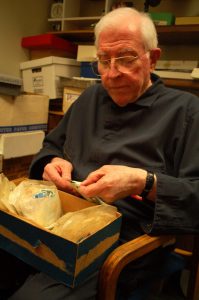 Opening up a volume of a Scott Stamp Catalogue, Fr. C.A. Leininger, S.J. peruses the densely filled pages of stamps and price values, identifying a certain group, or set, from his pile of unorganized stamps.After carefully soaking the set in water, he lays them face down on a newspaper, preserving the illustrations while removing them from the envelope they were once attached to. After being dried, the newly categorized set of stamps is placed into a small plastic envelope, holding stamps from all around the world and bearing the title “Penguins.” This envelope contains 100 of the more than one million stamps that belong to Fr. Leininger’s stamp collection. I had the fortunate chance of learning about his collection and its history.
Opening up a volume of a Scott Stamp Catalogue, Fr. C.A. Leininger, S.J. peruses the densely filled pages of stamps and price values, identifying a certain group, or set, from his pile of unorganized stamps.After carefully soaking the set in water, he lays them face down on a newspaper, preserving the illustrations while removing them from the envelope they were once attached to. After being dried, the newly categorized set of stamps is placed into a small plastic envelope, holding stamps from all around the world and bearing the title “Penguins.” This envelope contains 100 of the more than one million stamps that belong to Fr. Leininger’s stamp collection. I had the fortunate chance of learning about his collection and its history.
Although Fr. Leininger has taught at Jesuit for over 30 years, not many students have learned of his stamp collecting hobby. Fr. Leininger has been a Jesuit for more than 70 years. Having taught a variety of classes such as English, Latin, and ceramics, he has had numerous experiences throughout his many years at Jesuit. One of his hobbies is philately, or stamp collecting.
For an astounding 57 years, Fr. Leininger has collected, traded, and bought a variety of stamps, from magnificent Vatican stamps to vivid bird-related stamps. He explains the origin of his Vatican stamps: “I had a secretary who gave me a whole group of Vatican stamps that she collected, and it was very disparate, so I decided to unify it, so that was when I began collecting Vatican stamps. That was in 1965.” Learning that he had 7000-8000 Vatican stamps alone, I eagerly question him about the massive amount of other stamps he has accumulated. “They were part of the Jesuit Stamp Bureau for the missions, and when the person who was in charge of that died, they asked me to take it over. That was about 30 years ago.” Because Fr. Leininger was already collecting stamps at that time, it seemed fit to pass on the accumulation of stamps to an experienced philatelist such as Fr. Leininger.
 Since that day, Fr. Leininger has acquired over one million stamps that he catalogues in his stamp ‘accumulation,’ and continues to acquire more. This accumulation includes stamps from “practically every country in the world.” Most of the stamps are obtained at conventions and sent in mail by friends.
Since that day, Fr. Leininger has acquired over one million stamps that he catalogues in his stamp ‘accumulation,’ and continues to acquire more. This accumulation includes stamps from “practically every country in the world.” Most of the stamps are obtained at conventions and sent in mail by friends.
A separate collection of stamps, the Vatican stamps are Fr. Leininger’s favorite. He has spent the most time searching for these stamps and almost has a complete set. Telling me about his various Vatican stamps, Fr. Leininger mentioned a special set of stamps that was very important to him; “I have a certain set of Vatican stamps. There are only six stamps, but it took me about 11 years to get these stamps, because these six stamps cost me $1200.” Quite an investment of time and money has earned Fr. Leininger very unique and beautiful stamps, such as a detailed Vatican stamp he obtained: “The stamps that the Vatican put out when the Sistine Chapel was restored are a beautiful set.” From ornate buildings and monuments with intricate designs to lifelike portraits of holy figures, Fr. Leininger’s special set of Vatican stamps are a unique addition to his impressive assortment of stamps.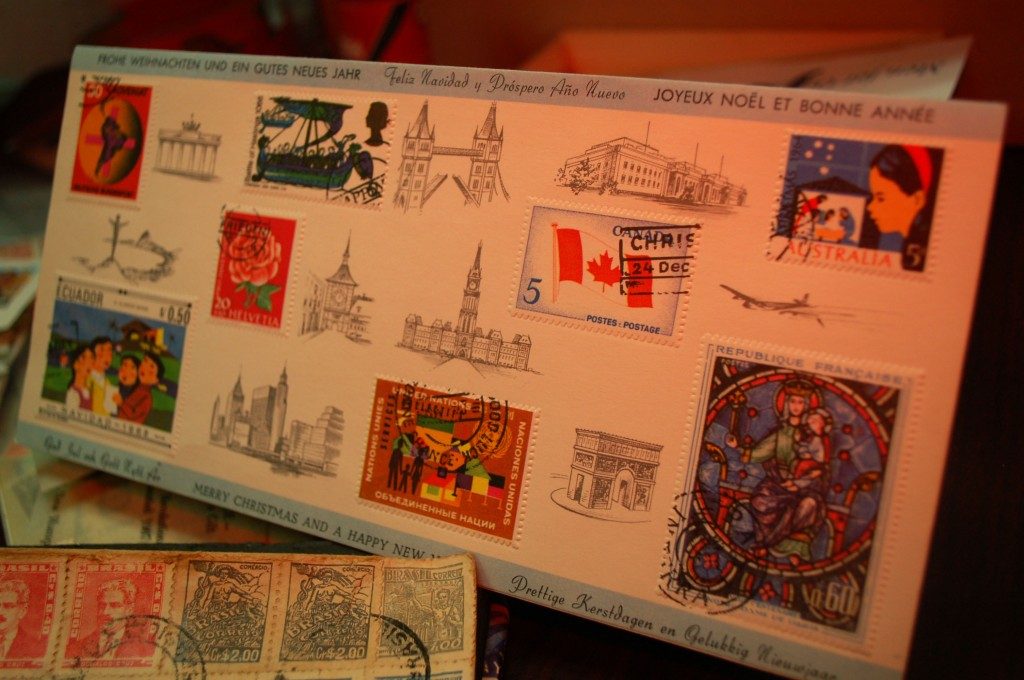
Most of the cataloguing and sorting takes place in the “Philatelic Phun Room,” located in the science department. There, Fr. Leininger uses his stamp catalogues to identify and sort the innumerable amount of stamps, jam-packed into shoe boxes on shelves. Fr. Leininger noted that he had catalogued only about “200,000 of the one million stamps in this room.”
One 19 x 22mm piece of paper bearing a colorful design sells in an auction for over $200,000. It is antique and quite rare, having been first printed and issued in the early 1900s. But what makes this piece of paper special is the fact that it has a flaw, an inverted design accidently made during its printing process. The elaborate red borderreveals a blue Curtiss Jenny, a biplane from the early 1900s. It’s not just any old piece of paper, it’s a 24 cent inverted Jenny Stamp, an unintentionally unique postage stamp created for airmail purposes, and only 100 of the incorrectly printed stamps were ever created.
Photography by Jack White ’13



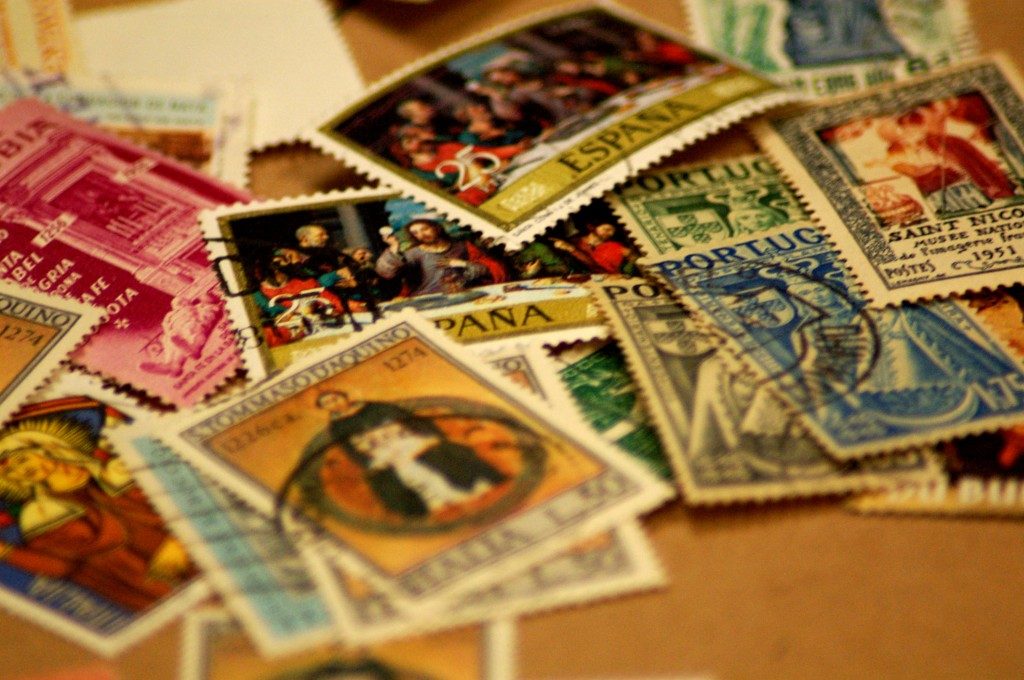
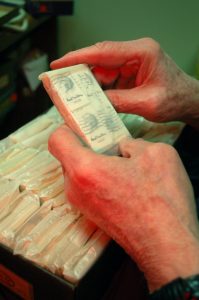


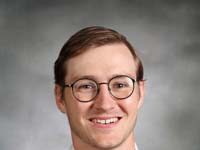

Payton – Thanks for sharing a side of Fr. Leininger very few of us know. Interesting hobbies sometimes lead to different interests. We should all be so fortunate!
Good article!
Aunt Jeannette
Does Fr. Leininger have the inverted Jenny Stamp in his collection?
I wonder if it would be possible to do a special museum show featuring stamps from his stamp collection. That could be pretty cool.
Hi Payton,
Aunt Barbara and I enjoyed your article. My Dad worked for the Postal Service in Cushing, OK for 46 years. I remember spending a New Year’s Day helping him stick 1 cent stamps on the Post Office inventory of what had been penny post cards when the rate changed to 2 cents. He had to make the change on New Year’s Day, when the office was closed, so the cards would be ready for customers to buy them when the office opened the next day….Uncle John
Payton,
WOW another wonderful piece of journalism. It made me think of when I was in grade school, I too collected stamps. Mor Mor always had stamps from Sweden from her family there. I had a pen pal in Japan too, i still remember her name: Moriko Tongu. Well keep up ther great work. We are very proud of you!!
Love,
Grand Deb and Grand Don